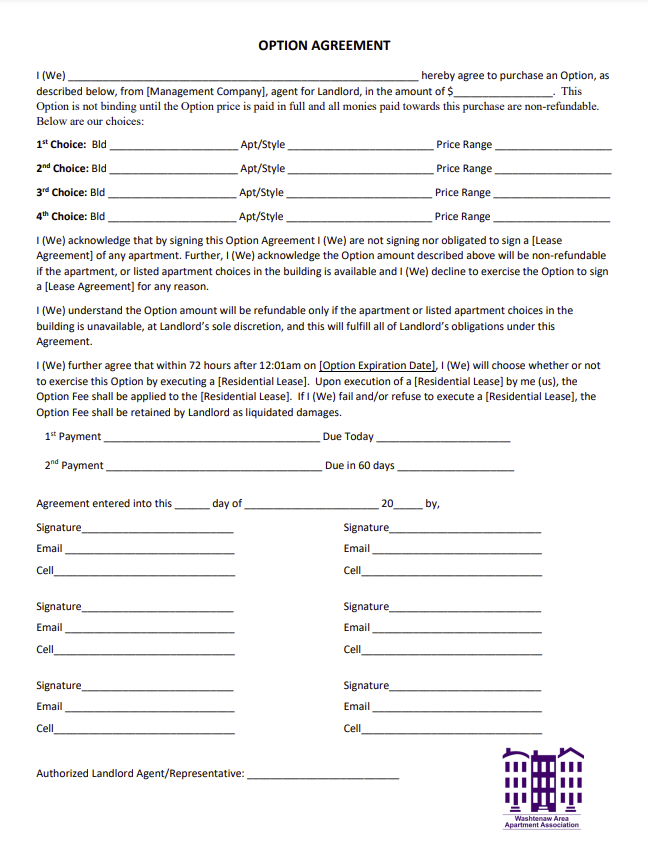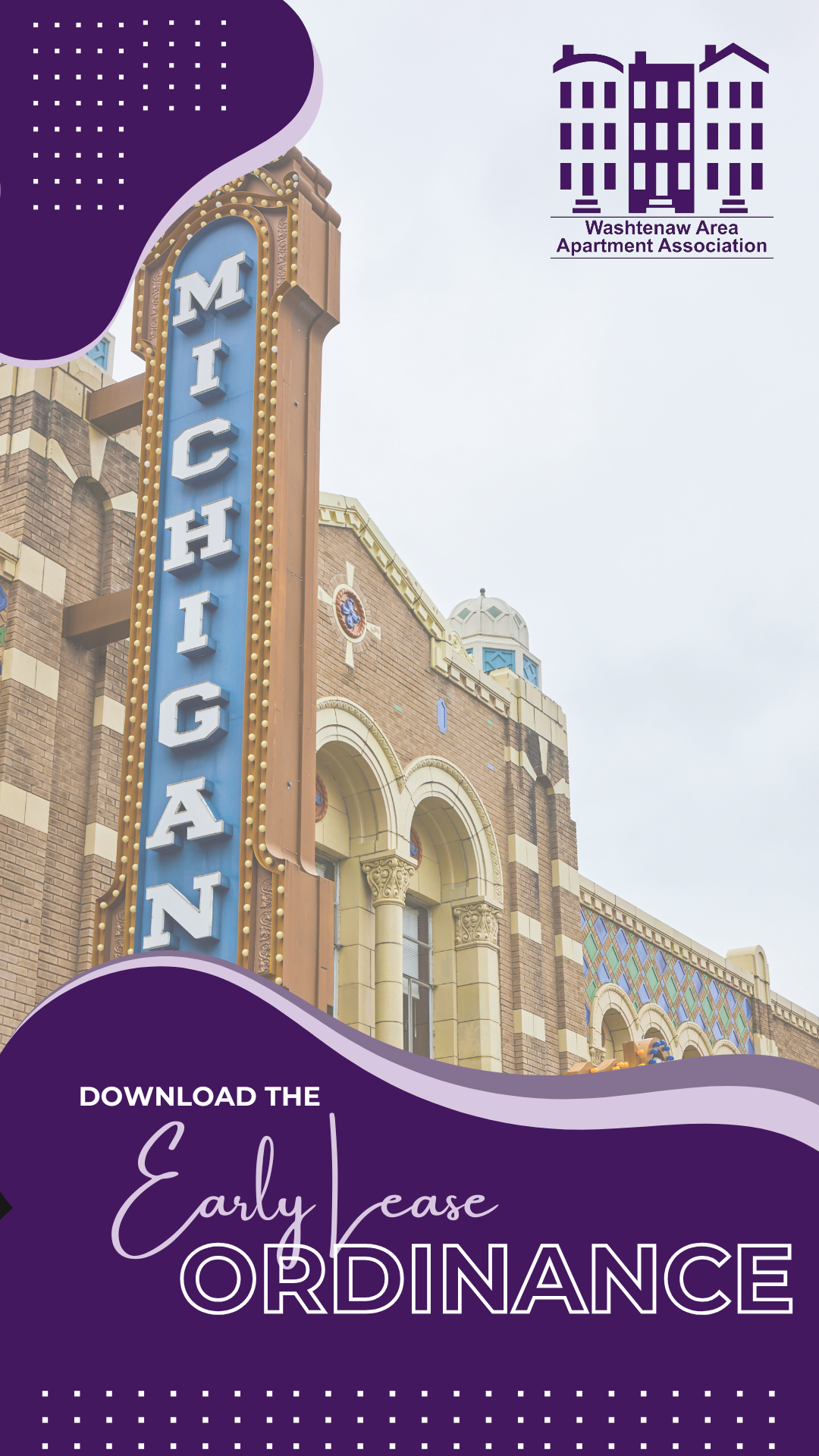Complete Guide for Option Agreements
A complete guide for Property Managers to start implementing Option Agreements into their leasing business practices
Will we tour housing?
Ann Arbor’s “Right to Renew” ordinance prevents property owners and professional rental agents from conducting tours of any housing and signing leases with new tenants until 210 days of the current lease have passed. For Fall leases this forces activity into the Spring just before exams and the end of the Winter term. There are things that both Landlords and prospective tenants can do during the ordinance’s leasing moratorium. Video tours and Landlord websites are the best way to learn about specific housing right now. Additionally, prospective tenants might gain entry if they know the current tenant. If a prospective tenant knows which housing they want to rent, they can purchase an Option. This is typically done by appointment on a “first come, first served” basis. We strongly urge prospective tenants to utilize all available virtual tours on the web so that you can make the most suitable and timely choices for their groups.
What is an Option?
An Option is a contract that allows the purchaser the right to choose to either rent or not rent an apartment/house during a specific agreed upon time period. An executed option agreement also prevents the Landlord from offering the same housing to someone else. The option contract gives the purchaser the security of knowing that if the optioned housing becomes available, they will have the right to lease the housing if they exercise the option they’ve purchased. Real estate options are a legal way for someone to secure a future interest in a property and have been used for ages.
How does this Work?
Working with the Landlord, once desired housing is selected the prospective tenant, an “Option Agreement” will be drafted and signed by both parties. At the signing the Landlord will require a payment. Depending on the terms of the option multiple payments towards the “Option Price” may be required. Prospective Tenants should remember that it could be as long as 5 or 6 months before the time to exercise their rights provided in the Option Agreement. Some Landlords allow multiple housing units to be ranked in their option agreements. This helps prospective tenants get their second choice if the first choice is not available because of a renewal. Ranking choices may not be used by all landlords.
Landlords should go to great lengths to explain how the option price is derived and paid. The option price should never exceed normal pre-move amounts of the security deposit, first month’s rent and any required fees. Rules about when the option becomes binding contract vary by landlord. The tenant should ask the landlord exhaustive questions, so they understand at what moment the housing is being held for them. The prospective tenant should always get an executed copy of the option agreement. Once the full amount has been paid, the unit(s) selected will be set aside until the ordinance moratoriums expire.
Download the Option Agreement Template here!
What Happens when ordinance moratoriums Expires?
At the end of the city’s moratorium on rentals, there will be 3 possible outcomes:
#1. The current tenant doesn’t renew, the apartment becomes available, and the tenant has chosen to exercise their Option
- The tenant completes an application. Each person signing the lease is required to complete a rental application.
- Landlord provides a lease for signing – The lease is executed
- The monies paid to purchase the Option will be applied toward the amounts due under the lease agreement. Depending on the price of the option there may be a balance due on Security Deposit, First Month’s Rent and other required fees.
#2. The current tenant renews their lease, and the housing (and perhaps all ranked alternatives) are unavailable.
- The monies paid to purchase the Option will be FULLY and PROMPTLY refunded back to prospective tenant.
- It is imperative that Landlords make these refunds extremely quickly so that the prospective tenant, who now must find other housing, can have their funds and move onto other housing quickly.
#3. The current tenant does not renew, the apartment becomes available, and tenant chooses NOT to exercise their Option (Typically a rare occurrence)
- The monies paid to purchase the Option will be retained by Landlord as liquidated damages.
In scenario #1 and #2 the option price, upon lease execution, is converted into Security Deposit, First Month’s Rent and other required pre-move-in fees. In scenario #3 the prospective tenant chooses not to exercise the right they’ve purchased and therefore the option price is forfeited to the Landlord as “liquidated damages”. The landlord, now on a short timetable, must find a new tenant to sign the lease that the option holder originally intended to sign.
If you are a tenant and have questions about options, you can ask questions your prospective landlord or the WA3. If you are a housing provider with questions about options, please contact the WA3
If you are a tenant and have questions about options, you can ask questions your prospective landlord or the WA3. If you are a housing provider with questions about options, please contact the WA3





